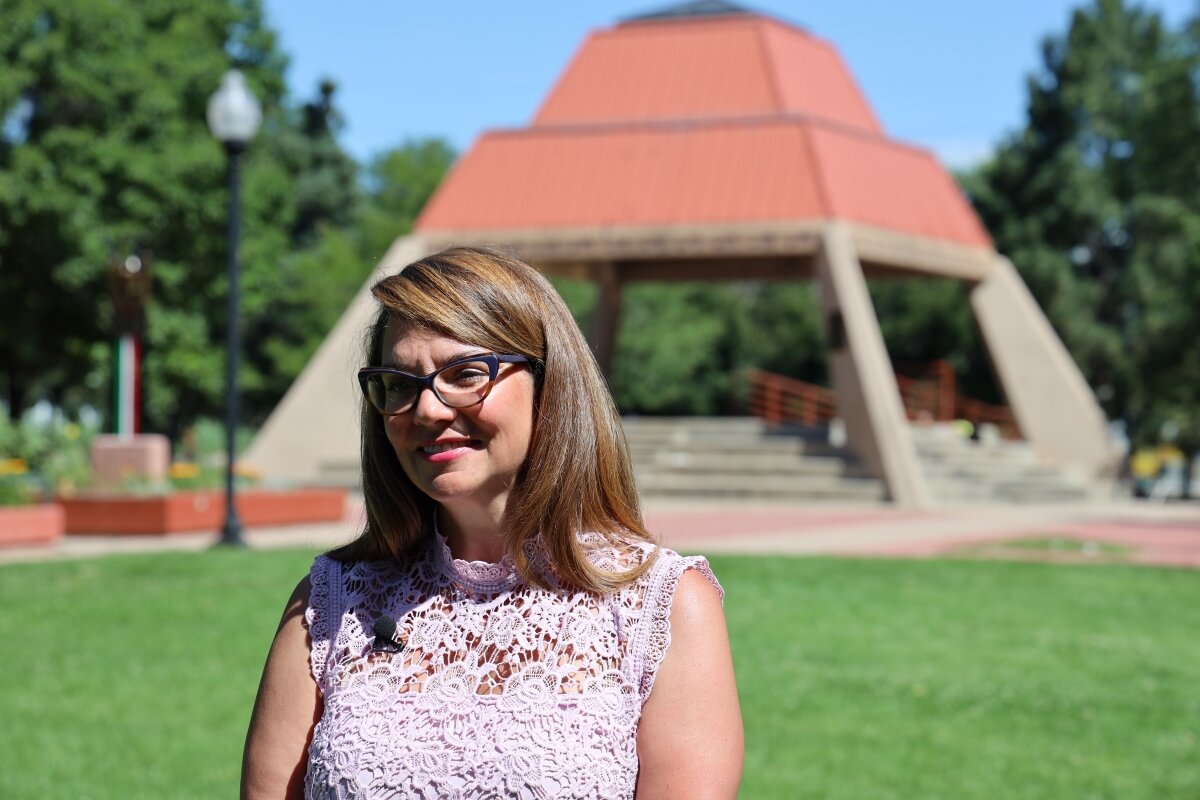‘Que Viva La Raza’: How preserving a park preserves history

DENVER — La Raza park is where many of Amanda Sandoval’s favorite memories took place.
“I spent many afternoons here. I have celebrated quinceañeras here,” said Sandoval, the city councilwoman for Denver’s District 1, which encompasses the northwest part of town. “I used to cruise up and down 38th when I was in high school, and we would stop here. So, I have lots of fond memories growing up here.”
Those memories — and the park’s historic significance during the Chicano Movement — are what drove Sandoval to lead the effort to designate La Raza Park as the city’s most recent historic cultural district.
“I wanted to really bring forward the opportunity to talk about the history and the culture,” Sandoval said.
The park takes up just one city block, or about 2.2 acres. Though it’s small by comparison — Washington Park, for example, is about 160 acres — the history of La Raza Park is expansive.
The park first opened in 1906 when the City and County of Denver purchased the lot. Back then, it didn’t have an official name. In the 1930s, City Council approved the name Columbus Park after Christopher Columbus. The name was a nod to the Italian-American community that once populated the neighborhood.
Following World War II, many Italian-American families moved to the suburbs. Latino families, who always had a presence in the neighborhood, moved to northwest Denver in greater numbers, according to the Denver Public Library.
During the Chicano Movement from the 1960s through the 80s, La Raza Park was a key location for organizers. Community activists once led a takeover of the park, which used to include a pool, in 1970, as similar takeovers took place at La Alma/Lincoln Park and Mestizo/Curtis Park in the late 60s and early 70s. These takeovers, often called “splash-ins” — like the sit-ins of the civil rights movement — involved Chicano activists taking over the parks’ pools.
The community celebrated the anniversary of the La Raza Park takeover for many years. In June of 1981, police officers shut it down. “It would turn into a day and night of tear gas and dogs, bricks and bottles, beatings and arrests,” Denverite reported in 2016.
“And you don't hear those stories in Congress Park. You don't hear those stories in other areas that have affluent white people,” Sandoval said. “You hear those [stories] in mostly … communities of color. So I wanted to really bring forward the opportunity to change, to talk about the history and the culture.”

Councilwoman Amanda Sandoval at La Raza Park.
In 2020, Sandoval focused her organizing efforts on officially changing the park’s name. She said a park, especially one located on Navajo Street, should not be named after a colonist who committed atrocities against Indigenous people. As a city councilwoman, Sandoval helped move dialogue and advocate for a name change to La Raza Park, which many people on the Northside — especially Latinos and Chicanos — had already been calling the park for decades. Sandoval’s effort was not the first: in 1988, City Council voted against the renaming.
Now that La Raza Park is officially a historic cultural district thanks to the council’s unanimous vote, three key elements of the park will be “forever codified,” Sandoval said: The central kiosko structure, which was built in 1989; the Chicano art inside the kiosko; and the “La Raza Unida” sculpture by artist Emanuel Martinez.

Artist Emanuel Martinez's sculpture "La Raza Unida” in front of the kiosko in Denver's La Raza Park.
Sandoval grew up in the neighborhood around La Raza Park. Over time, she has witnessed the ways in which gentrification has changed the landscape of her childhood community. The historic cultural district designation in tandem with the park’s name change, Sandoval said, are just a couple of ways to combat the crawl of gentrification. (A new townhome overlooking the park sold for $1.25 million last year.)
“Last summer, I got to go on a work trip to Mexico City, and one of the things that I learned is they really emphasize keeping the name of all of the different little townships so that gentrification doesn't happen,” Sandoval said.
It is common for people in Denver to refer to the northwest part of the city — what Sandoval and many others with roots in the area call the Northside — with different, trendy names like the Highlands, LoHi (for Lower Highlands) or SloHi (a portmanteau of Sloan’s Lake and Highlands). Sandoval dismisses those monikers as the language of developers and gentrifiers. She’s not alone.
When students at North High School walked out of class last year and marched down 38th Avenue in solidarity with Tim Hernández, a Chicano teacher whose contract did not get renewed, they chanted “this is the Northside, not the Highlands,” and “Brown people used to live here,” as Rocky Mountain PBS reported.

Students and community members rally in support of teacher Tim Hernández at La Raza Park, March 13, 2022.
The historic cultural district designation is the result of decades of activism and community-building, and illustrates the power local government has in preservation. For Sandoval, it’s her own family history that led to this moment, and has informed her decisions in office.
“In the Latino community, in communities of color, we share our stories through verbal traditions,” Sandoval explained. “I was talking to someone and they looked at me and they said, ‘is that why you always referred to it as the Northside?’”
Sandoval said that is exactly the reason. “Because the name really does matter.”
Kyle Cooke is the digital media manager at Rocky Mountain PBS. You can reach him at kylecooke@rmpbs.org.
Julio Sandoval is a senior photojournalist at Rocky Mountain PBS. You can reach him at juliosandoval@rmpbs.org.